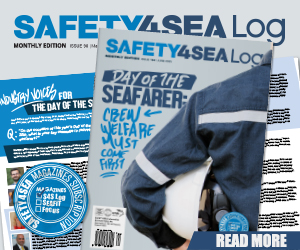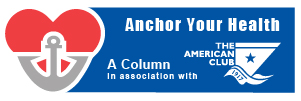NTSB published its report on the contact between the offshore supply vessel Elliot Cheramie with the oil and gas production platform EI-259A, on June 25, 2021. Four minor injuries were reported.
The incident
At 0630 on June 24, the Elliot Cheramie moored at its regular fuel facility in Port Fourchon after completion of a 12-hour transit from VR-397A with four crew, three offshore workers, and equipment on board. From 0630 to 0800, the engineer/deckhand (on the 12-24 watch) and the deckhand (on the 00-12 watch) refueled and loaded potable water.
A crew change for the captain and the deckhand positions was scheduled to occur later in the day, so at 0700, the relief deckhand and relief captain reported to a medical office in Houma, Louisiana, for client-mandated COVID-19 tests. The relief deckhand went to the company office at 0830 and was provided an apartment while he waited for his results. He told investigators that he tried to rest in the apartment but could not fall asleep.
On the Elliot Cheramie, the offshore workers departed at 0800, and the vessel moved under a shore crane to offload equipment and load material for the next trip to VR-397A. The engineer/deckhand continued off-watch maintenance work during the cargo operations. He and all hands unloaded provisions from a delivery truck on the dock, carried the boxes of groceries and supplies aboard, and stowed the items.

At noon, the captain (scheduled to depart that day) and the engineer/deckhand took the watch from the mate and the departing deckhand. All hands continued loading and stowing provision boxes. At 1330, five offshore workers boarded the vessel. At 1630, the engineer/deckhand saw the mate leave to go to bed. The engineer/deckhand continued with vessel operations and maintenance jobs and checked vessel machinery to get underway.
At 1900, the relief captain and the relief deckhand arrived aboard the Elliot Cheramie. The deckhand told investigators that he learned he had the 00-12 watch when he boarded. At 1930, the crew change was logged completed. The deckhand said he spent less than an hour “picking up, putting away groceries and other supplies,” then he stowed his personal gear and got in his bed at 2130 to sleep before his watch.
The engineer/deckhand started the propulsion engines, brought in the mooring lines, and, at 2000, with the captain at the helm, the Elliot Cheramie was underway outbound for the transit to VR-397A. The engineer/deckhand stood watch, which consisted of hourly rounds of the engine room and helping the mate or captain on watch as necessary.
When not making security rounds, most of the deckhand’s underway watch was spent in the common areas. The mate told investigators that he woke up at his usual time of 2200 in preparation for his watch. About 2345, the mate arrived in the wheelhouse to relieve the captain. Although the deckhand had set an alarm for 2344, it did not wake him up. The engineer/deckhand went to bed at midnight.
The mate stated that, due to the long day, he was “more tired than usual.” He felt “groggy,” so he walked around the wheelhouse and the bridgewings several times to stay awake. He stated that, after sitting in the wheelhouse chair, he must have fallen asleep. He woke up with the platform “dead ahead.” He pulled back on both engine throttles, but “it was too late.”
Per his statement in the CG-2692 Report of Marine Casualty, the vessel struck a platform in block EI-259, with the latitude and longitude corresponding to oil and gas production platform EI-259A, at 0245. After the collision, the mate stopped the engines.

Analysis
The Elliot Cheramie’s mate on the 00-12 watch (when the casualty occurred) was likely fatigued. In the 4 days leading up to the casualty, he had consistently worked for periods longer than the 12 hours recommended by the owner/operator’s Fatigue Management document.
The day before the casualty, the mate reported being awake for 19 hours straight and working for the last 17 hours, with most of the work in port requiring high levels of physical exertion such as offloading and loading material and provisions.
The extended work hours outside of the mate’s normal schedule reduced the opportunity to receive sufficient sleep before assuming the 00-12 watch. The mate reported receiving only 5 hours of sleep in his 7 off-work hours before the casualty watch—less than the SMS-recommended 7-8 hours—using the remaining 2 hours to prepare for his scheduled 00-12 watch.
Acute fatigue can occur when individuals receive less than the recommended 7-8 hours of sleep during a 24-hour period. Performance effects of fatigue include diminished alertness and decision-making, and a reduction in operator vigilance.
Having received only 5 hours of sleep in the previous 24 hours, and, given the physical nature of work performed the previous afternoon, the mate was likely experiencing the effects of acute fatigue. He reported that he felt groggy on his watch and fell asleep when he sat in the wheelhouse chair.
Probable Cause
The National Transportation Safety Board determines that the probable cause of the contact of the OSV Elliot Cheramie with Oil and Gas Production Platform EI-259A was the owner/operator not adhering to their 12-hour work hour limit policy, which led to the fatigued mate falling asleep while on watch.
Lessons learned
Fatigue Management: In this casualty, and as the NTSB has previously noted in numerous commercial vessel casualties, crew fatigue was a significant causal and contributing factor. Company operational policies and requirements should incorporate and follow fatigue management best practices to ensure that crewmembers receive enough rest to adequately perform navigational, lookout, engineering, and other watch stander duties.
Such policies should include the maximum hours (both duty hours and off-watch work) crewmembers are allowed to work in a consecutive 24-hour period, except in an emergency. Additionally, companies should ensure that vessels are crewed with the appropriate number of trained personnel to safely perform operations without compromising the work/rest schedules of off-duty watchstanders.
Companies and vessel captains should also actively monitor the watch schedules and any off-watch work performed by their crews to ensure that fatigue mitigation policies are adhered to, adjusting watch schedules accordingly for crewmembers at risk for fatigue.

































































